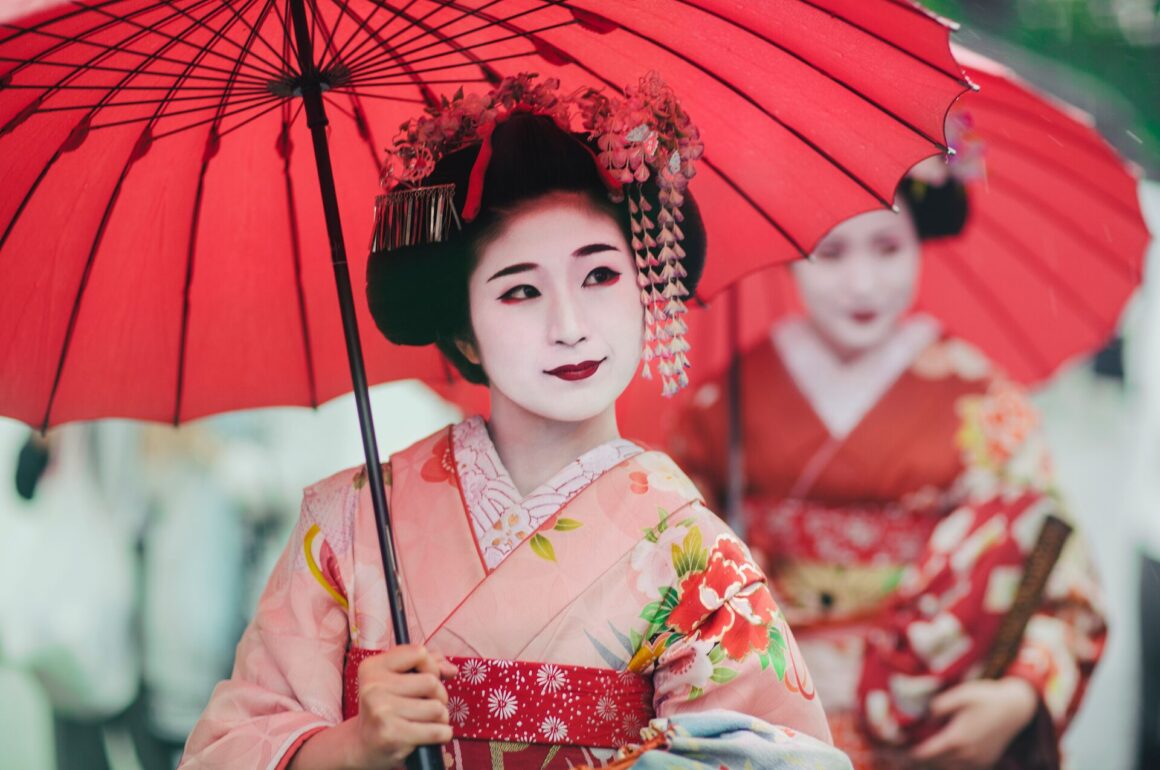An iconic symbol of culture and elegance, Japanese geisha have been entertaining high society for centuries. Although geisha can be found in several major cities across Japan, most of them work in Kyoto – the country’s capital of traditional culture. Highly skilled entertainers and fascinatingly mysterious, to see geisha in Kyoto remains an exclusive privilege.
Through music, literature and the art of intrigue, geisha have captured the imaginations of audiences around the world. Their distinct white makeup, elegant kimonos and pristine hairstyles are often the first images conjured up when thinking of traditional Japanese culture. Geisha women dedicate their lives to Japanese traditional arts.
For travel inspiration: Japan destination guide
The history of geisha in Kyoto
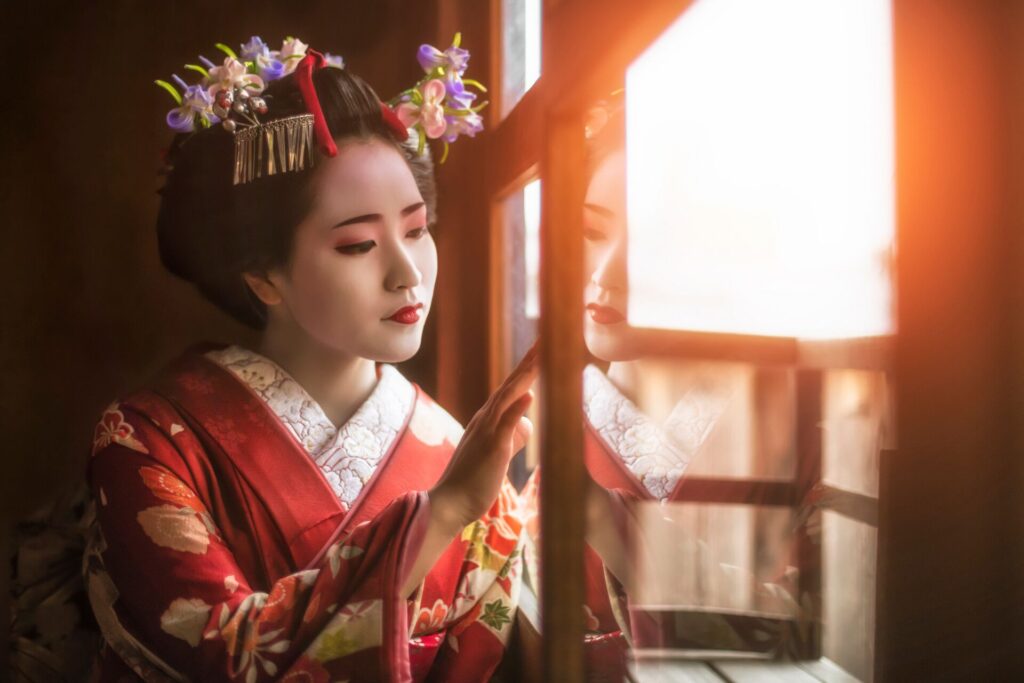
Geisha history begins in the 13th century. Originally men known as taikomochi, they were employed to advise and entertain their lord. By the 16th century, they became closer to storytellers, relied on to generate conversation. Women started becoming geisha in the 17th century and by mid century they had begun to outnumber the men.
Geisha in Kyoto were originally hired to entertain guests at tea houses, and were trained in the arts of music, dance and conversation. Over time, geisha became synonymous with the refined culture and sophistication of Kyoto. They were highly respected and admired for their skills and beauty. Their main function was to provide an atmosphere of elegance and fun for wealthy clientele.
Discover this on: Majestic Japan
An exclusive performance
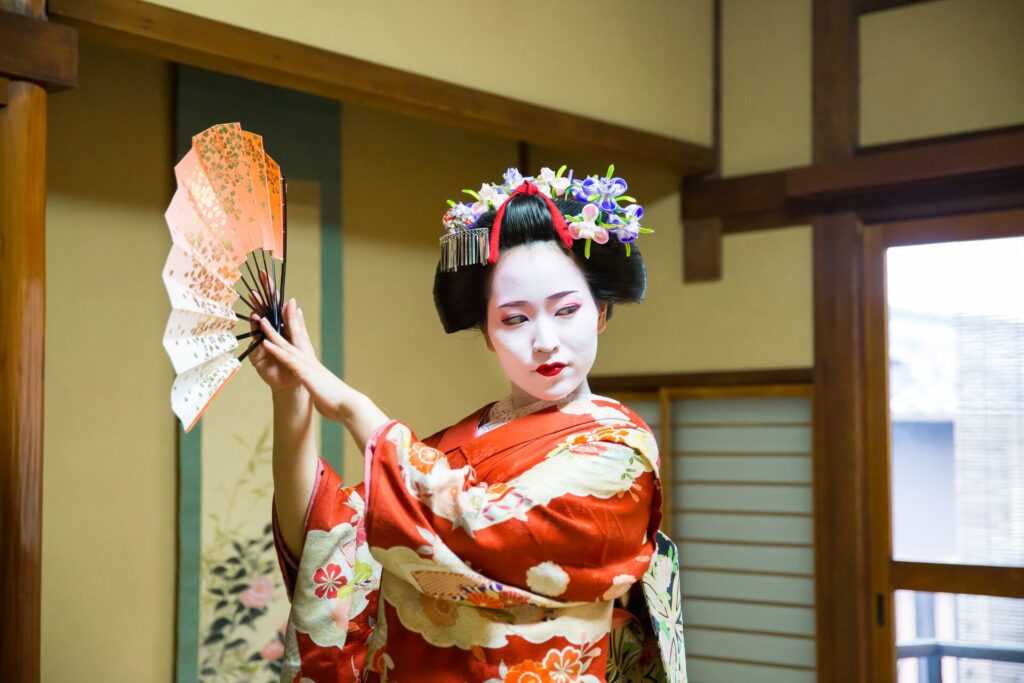
Today there are only about 1,000 geisha in Japan. Many perform at tea houses – exclusive places, where only trusted customers are granted entry. Geisha-hosted dinners are expensive, high-class events so to be treated to a performance is quite a privilege.
As guests of Luxury Gold you’ll be treated to a performance by a Maiko, an apprentice geisha on Majestic Japan. You can distinguish between the two because maiko wear colorful kimonos with long sleeves and extravagant hairpins, while geisha wear plain kimonos with shorter sleeves. As you dine, you’ll enjoy a traditional performance of dance and entertainment whilst savoring a lunch of refined kaiseki cuisine.
Read more: A journey of a lifetime: unearthing Majestic Japan with Luxury Gold
Training to become a geisha in Kyoto
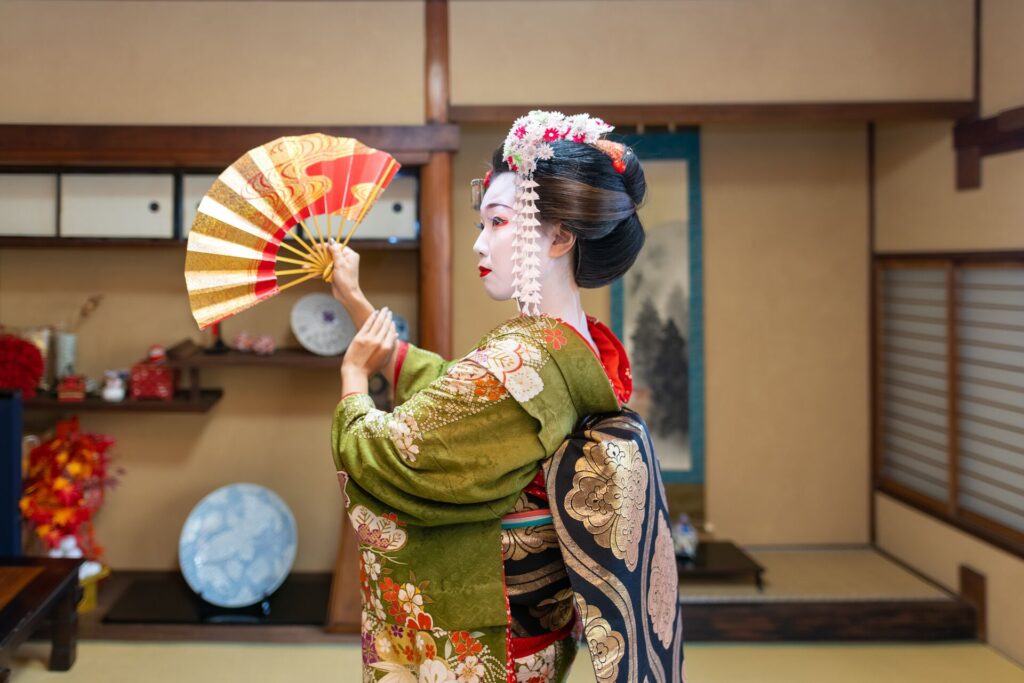
Prior to World War II, there were about 80,000 geisha, but that dwindled in the decades that followed. By the late 20th century there were only a few thousand, almost all confined to Tokyo and Kyōto, where they were patronized by only the wealthiest businessmen and most influential politicians. However, in the past decade, the number is said to be slowly rising again as a new generation reconnects with their culture. It takes an average of six years to learn how to become a geisha and incorporates studying, mentorship, observation and practice.
Geisha in Kyoto were highly respected members of society and were admired for their grace, poise and intelligence. And now a growing number of young women in Japan are now making the choice to return to the highly regarded traditional art form as their livelihood. Together, by learning how to be a geisha, they have become the protectors and practitioners of the art and culture of a bygone era.
You may also enjoy reading: Guardians of a national icon: meet the Japanese cherry blossom doctors
Memoirs of a Geisha
Geishas have been a popular subject in literature and film for decades. An enduring image of Japanese culture, they have captured the imagination of audiences around the world. Though many books have been written, the strict code of silence from the geisha themselves leaves many a story romanticized. In fact, it could be a grueling profession, especially during war time.
Perhaps the most famous representation of geisha in film literature is Arthur Golden’s ‘Memoirs of a Geisha.’ This romantic, dramatic novel tells the story of a young girl who becomes a geisha in Kyoto before the war. The novel was later adapted into a critically acclaimed film in 2005, which starred Zhang Ziyi and won three Academy Awards.

However, controversy surrounded the production, with Japan and China heavily criticizing the film as being an inaccurate representation. And, though not based on a true story, a real geisha named Mineko Iwasaki sued the author for defamation as the book used similar characters and stories told to the author in private. There is a strict code among geisha never to talk about clientele which left her a pariah of the community.
Another famous film that depicts the world of geishas is ‘Sayuri’, which was released in 2009 and is based on the true story of a geisha who became a spy for the Japanese army during World War II. The film explores the complex relationships and politics of the geisha world and offers a fascinating glimpse into the traditions and culture of Kyoto.
You might enjoy reading: A guide to Japan’s finest Kobe beef
Destination Kyoto
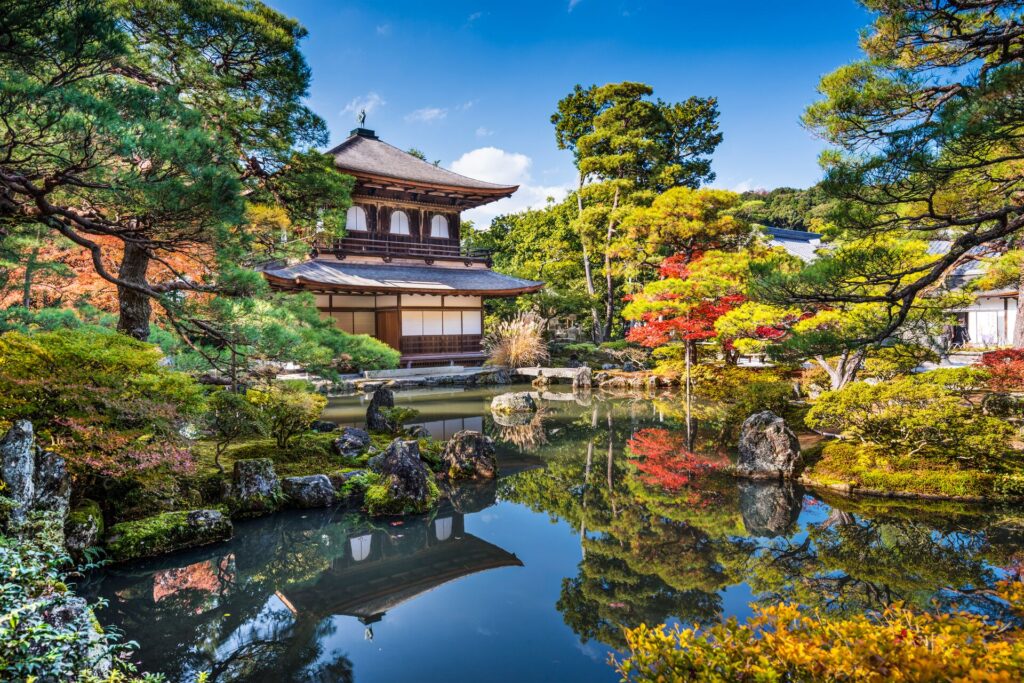
Steeped in history, Kyoto is home to roughly one quarter of Japan’s national treasures. As well as its iconic teahouses, the city is full of historic temples, sanctuaries and monuments that are designated UNESCO World Heritage Sites. Exquisitely constructed shrines and palaces, with ornate architecture sit amongst manicured gardens and elegant courtyards.
A truly luxurious destination, Kyoto offers the perfect blend of tradition, elegance and mindfulness to invigorate the body, mind and soul of any traveler. The city is also home to many exceptional restaurants and magnificent hotels purveying the very best of Japan’s world-renowned hospitality.
To experience the magic of geisha in Kyoto for yourself, take a look at our Majestic Japan limited edition tour.



